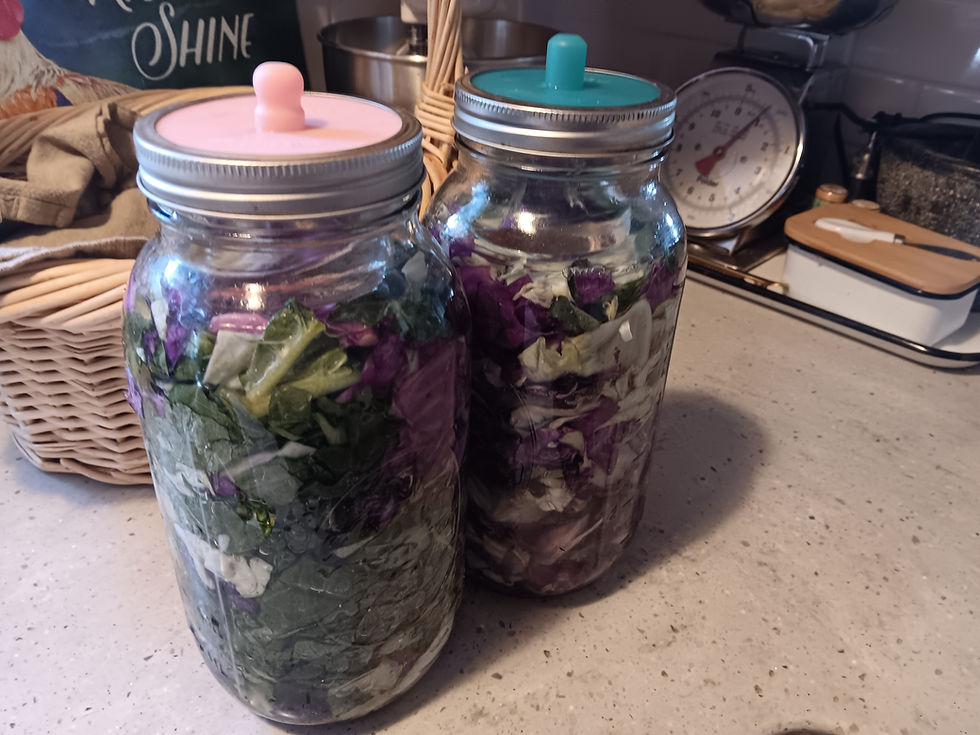Pumpkin Crop
- Ed
- Sep 29
- 1 min read
One of the challenges of growing winter squash and pumpkins in a big patch is that it is impossible to tell if we actually have any produce. July and August is just a sea of leaves, and the sound of bumblebees pollinating flowers. Every once in a while we catch a glimpse of something, but it is just a tease. By late August, however, the leaves begin to wilt and reveal what has taken 3 months to grow.
This year, we used woven landscape fabric as a weed barrier, which performed very well in its job. However, this may have limited some of the winter squash's ability to set additional roots along the stems, giving us a smaller crop of Butternut and Acorn squash. My Delicata squash experiment was a success, yielding a good crop. These reportedly do not store as well as thicker-skinned squash, but their small size means we can cook one and have it eaten in just a couple of days.
At first, it seemed like our pumpkin crop would be limited, but we ended up with more pumpkins than we can use. The larger varieties did not produce as well, but the Jack be Little and pie pumpkins did really well.

My employer hosted an annual client event at the office recently. We conduct demonstrations of our service areas and then provide lunch. Since we had so many pumpkins, I offered to bring some to decorate the lunch tables. They made for nice centerpieces, and the staff took them home afterwards. Better than putting them in the compost pile, and we still have plenty for the chickens and for pie.




Comments